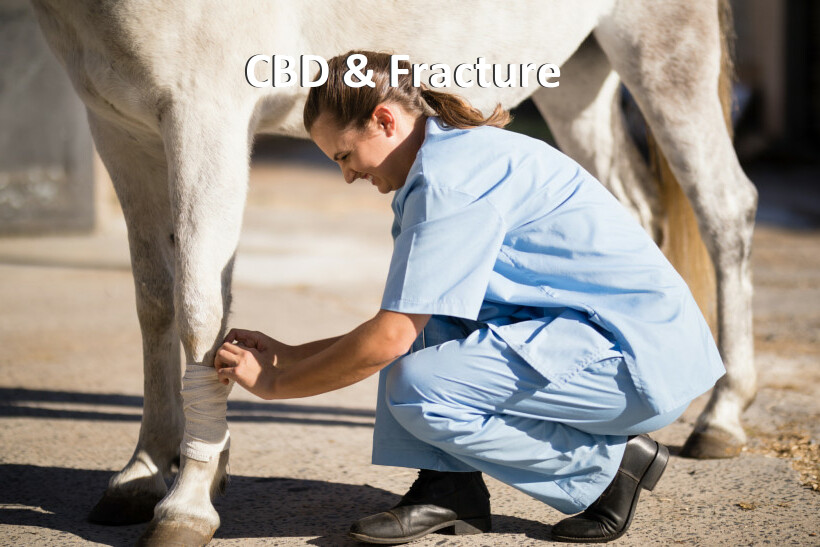CBD and fracture in horses
This is the great fear of every horse owner, because it can lead to terrible consequences, fracture. For several years now, equine veterinary medicine has made tremendous progress, and the idea that a fracture in a horse cannot be cured is far away. Despite this, treating a fracture in an animal that can easily exceed 500 kilos is not always easy. We will discover together the main causes of fractures in horses, how best to treat them, and how CBD (cannabidiol) can help them to recover better.
What's a fracture ?
A fracture is a bone that has been subjected to enough stress to partially or totally break. Sometimes, depending on the nature of the stress, a bone may even be broken in several places. This fracture can be the result of a fall, a shock, a fatigue fracture, osteoporosis, etc. Most injuries are closed, but in the most serious cases, by breaking the bone, the skin can be torn, and this is known as an open fracture. The bone may even have shifted out of alignment, leaving fragments, or not. There is a fracture specific to foals and young horses: the green wood fracture. Because in these young animals, the skeleton is not yet as strong as in the adult horse. It is therefore rather soft, and does not break cleanly, but breaks like a branch of green wood. Thus, the bone of the foal or young horse will not break, but it will bend more with bone tears.
Diagnosis
If you think your horse has broken a bone, don't move it, and call your veterinarian urgently. He will question you to better understand the situation, (circumstances, time of injury, location of pain, etc.), and will proceed to a clinical examination of your animal. After the examination, an X-ray will confirm the diagnosis, pinpoint the exact location of the bone injury, and possibly collect other important information. (Are there other broken bones on the same bone, are there other broken bones, etc.).
Treatment
The management of a fracture in a horse is not an easy task. Once the nature of the injury is well established, the veterinarian will be able to immobilize the fractured limb in its normal anatomical position, and give the horse powerful painkillers. Depending on the seriousness of the injury, the horse should be kept in the stall, in order to limit its movements as much as possible. A light pain treatment may be given. This small dose of medication will prevent the horse from becoming too comfortable, and will help the injured limb. During the horse's convalescence, and to ensure a good recovery, further X-rays will be taken to monitor the progress of the treatment. If the horse must be taken to a specialized clinic, the veterinarian will give you all the information you need to move your animal in good safety conditions.
CBD and bone healing
CBD (cannabidiol) is one of the popular cannabinoids. It is obtained from industrial hemp (Cannabis Sativa). Unlike recreational cannabis, which is rich in THC (Cannabis Indica, which is illegal), Cannabis Sativa contains almost no THC in its natural state, less than 0.2%, and then 0% in the finished product, which is why the sale of CBD is legal. Cannabidiol (CBD) is famous for its immense therapeutic potential. In particular, it is consumed for its anti-inflammatory and pain-relieving properties. Here is the result of the latest research on the effects of CBD in patients with fractures.
- Scientists from the University of Jerusalem have shown in a study published in 2015, that cannabidiol improves the biomechanical healing properties in fractures in rats.
- Another study also shows that the effects of cannabidiol (CBD) stimulate the enzymes responsible for the cross-linking of collagen, a protein very important in the construction of connective tissue.
The conclusion of these two studies shows that CBD (Cannabis Sativa) probably participates in the improvement of the biomechanical properties of bone fracture calluses.




